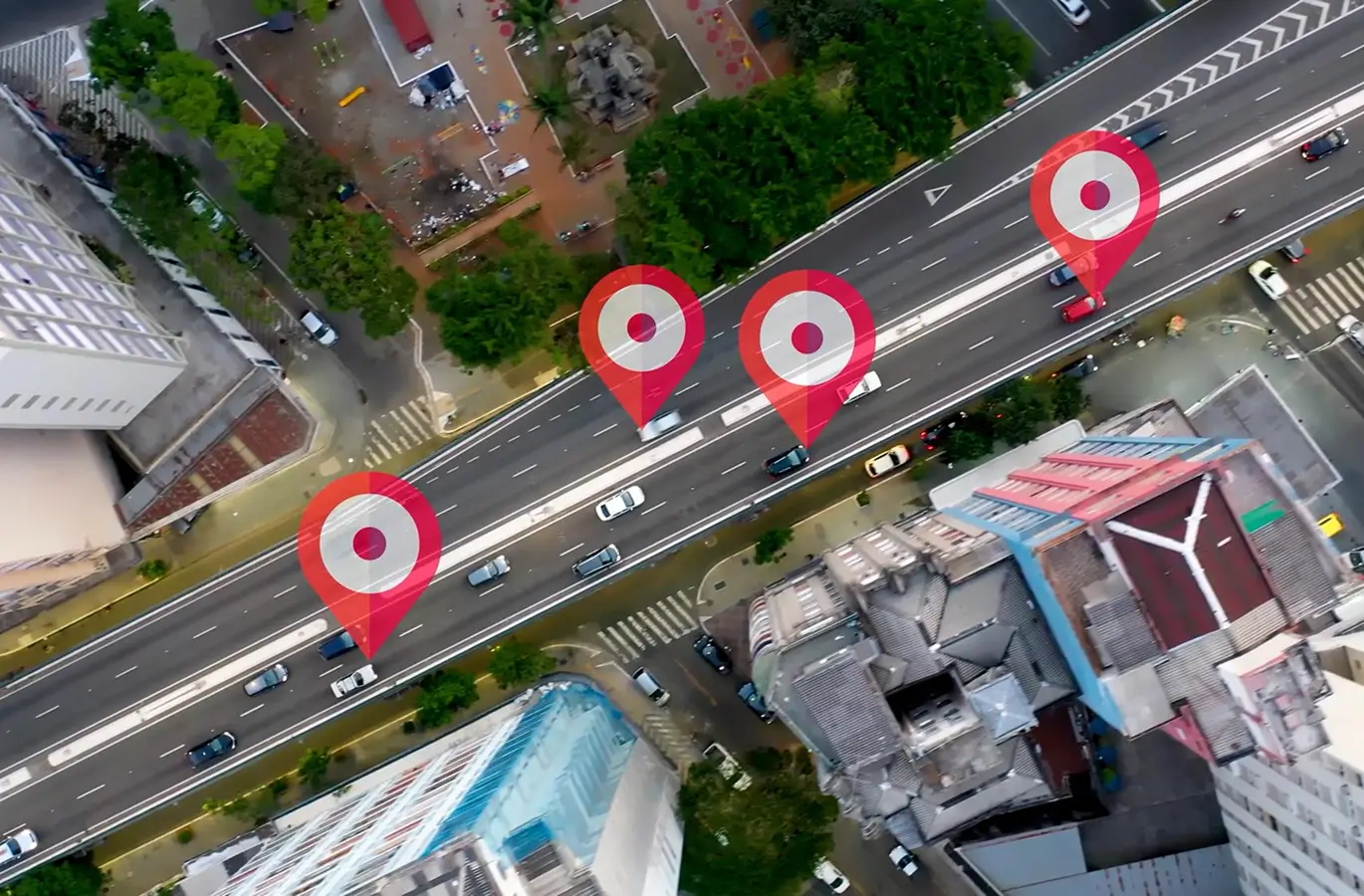The best fleet management software in 2026 is an AI-enhanced ecosystem that goes beyond simple GPS tracking to prevent breakdowns, optimize costs, and sync with existing systems. Key features include real-time tracking, AI diagnostics, customizable workflows, mobile apps, and strong integration capabilities. The software should offer preventative maintenance, smart driver monitoring, cost/fuel efficiency dashboards, and paperless compliance tools, while being scalable and easy to use.
Why 2026 demands a new kind of fleet management software? Because it’s no longer enough for fleet software to simply “track vehicles.” In 2026, businesses expect their platforms to prevent breakdowns, flag unsafe driving, optimize costs, and sync with multiple systems—all while being easy to use and accessible from anywhere.
Whether you’re running a 20-vehicle construction fleet, a 200-truck logistics operation, or managing on-site service vans across five cities, the question is the same: What software helps me get control, save money, and grow faster?
This isn’t a list of buzzwords. It’s a data-backed guide to choosing the best fleet management software platforms of 2026—based on real features, practical use cases, and what truly matters to growing businesses.
The best construction fleet tracking systems in 2026 include Reach24’s REACH™ platform supports these operations by enabling modern, cross-industry maintenance workflows—helping fleets cut asset downtime and helping service providers boost technician productivity, Tenna for its construction-focused capabilities, Verizon Connect for its all-in-one platform, and Samsara for being a great fit for startups and smaller fleets. Other strong choices are Motive for real-time safety insights, Azuga for improving driver behavior, and Teletrac Navman for its dependable vehicle maintenance tools.
What Is Fleet Management Software in 2026?
Fleet management software in 2026 is more than just a dashboard. It’s a real-time, AI-enhanced ecosystem that brings together:
- GPS tracking and geofencing: See where vehicles are at all times and get alerts when they enter or exit designated zones.
- Preventive and unplanned maintenance: Get ahead of vehicle issues before they become breakdowns.
- Service schedule: Automate routine maintenance, inspections, and updates.
- Vendor and asset coordination: Link field equipment, rentals, and third-party services seamlessly.
- Compliance automation: Stay ahead of DVIR rules without paperwork
All from a central interface—on desktop and mobile.
Modern fleet software doesn’t just visualize. It orchestrates.
What to Look for in Today’s Top Fleet Software Platforms
Real-Time Tracking With Sub-Minute Refresh Rates
A modern fleet platform should update locations in near real-time (within 30 seconds or less), providing dispatchers with accurate movement data without delay.
- AI-Powered Diagnostics and Alerts
Beyond alerts, AI should detect patterns: recurring faults, driver fatigue risk, abnormal fuel use—and suggest action. - Customizable Workflows
Your business isn’t cookie-cutter. Software should allow custom rules, approvals, alerts, and maintenance triggers. - Mobile App Access
Drivers and supervisors need clean, intuitive apps for inspections, job updates, and routing—all in offline mode. - API and System Integrations
Look for prebuilt integrations with your ERP, fuel card system, payroll, or customer service tools. Seamless data flow is the key. - Advanced Reporting
Metrics should be drillable by driver, asset, route, and day. Bonus: If you can automate exports and create visual dashboards. - Scalability
Whether you grow from 10 to 100 vehicles or expand into new verticals, your platform should handle the journey.
Software Features That Matter in 2026
1. Preventative Maintenance Tools
Avoid downtime before it happens.
- Sensor-based diagnostics: Monitors engine health, tire pressure, battery levels, and brake performance.
- Failure pattern detection: Uses past service records to figure out likely future failures.
- Automated work orders: Generates maintenance tickets before issues occur.
2. Smart Driver Behavior Monitoring
Turn safety data into daily improvements.
- Event-based tracking: Logs specific risky behaviors like hard braking or phone use while driving.
- Driver scorecards: Offers gamified feedback on a weekly or monthly basis.
- Coaching workflows: Assign follow-up training or ride-alongs based on behavior patterns.
3. Cost and Fuel Efficiency Dashboards
Know your true costs, not just expenses.
- Cost-per-mile analysis: Break down spending across vehicles, routes, and even clients.
- Idle time visualization: Pinpoint where and why engines are burning fuel unnecessarily.
- Fuel theft detection: Compare mileage to card transactions to flag inconsistencies.
4. Real-Time Dispatch and Route Optimization
Get jobs done faster with fewer miles.
- Dynamic routing: Suggests optimal routes in real-time, adapting to changing weather conditions and traffic.
- Live dispatch reassignment: Enables job shuffling on the fly without driver confusion.
- Time-window delivery support: Automatically prioritizes jobs with firm deadlines.
5. Paperless Compliance and Inspection Tools
Eliminate manual logs and streamline audits.
- Digital pre/post trip inspections: Capture data with photos, signatures, and timestamps.
- HOS integration: Automate driver logbooks and regulatory calculations.
- Audit reports: Generate inspection history and violation logs in minutes.
6. Multi-System Integration Capabilities
Your software shouldn’t live in a silo.
- Fuel card syncing: Pull live spend data into your fleet portal.
- ERP and CRM hooks: Align vehicle use with sales, service, or logistics teams.
- Open API architecture: Enable custom workflows or dashboards using your tools.
How to Match Software to Fleet Type
Delivery Fleets
Keep packages moving, and customers informed.
- Real-time ETAs
- Proof of delivery capture
- Customer-facing updates
Field Service Fleets
Improve technician utilization and job closure rates.
- Mobile checklists
- Job progress tracking
- Service-to-invoice syncing
Logistics & Long-Haul
Stay compliant, efficient, and safe on the road.
- ELD and IFTA support
- Hours-of-service optimization
- Load efficiency tracking
Construction Fleets
Track both people and equipment on mixed-use sites.
- Engine hour logging
- Equipment geo-locking
- Maintenance calendar alerts
What Real Fleet Managers Say They Need
- Proactivity: “The system should remind us—not the other way around.”
- Speed: “Give us the truth fast. We don’t have time to build reports.”
- Scalability: “We’re growing. Don’t make me rebuild everything from scratch.”
- Usability: “Our drivers need something simple. No learning curve.”
Your software should work the way your business runs—not force you to adapt to it.
Future-Proof Features to Watch For
- AI-driven recommendations: Suggest optimal schedules, vendors, or drivers based on data.
- EV readiness tools: Helps fleets transition with charging insights and battery analytics.
- Carbon emission reporting: Supports green fleet initiatives and compliance.
- Driver rewards systems: Motivates safer driving through gamification.
- Voice commands and AI chat: Speeds up tasks and troubleshooting.
Checklist: How to Choose the Best Fleet Software for Your Needs
- Is the platform cloud-based and mobile-ready?
- Can it integrate with our existing systems?
- Does it support real-time tracking and alerts?
- What’s the onboarding and training experience like?
- Is it scalable for 2x or 10x fleet growth?
- Are reports customizable and exportable?
- Can drivers use it without a steep learning curve?
If your answers aren’t a confident “yes,” keep looking.
Getting Started: 90 Days to Transformation
Weeks 1–2: Setup
- Import vehicles and users
- Connect GPS, fuel, and maintenance systems
- Define reporting structure
Weeks 3–6: Training & Pilots
- Conduct role-based training sessions
- Run pilots with 10–20% of your fleet
- Gather early feedback from dispatchers and drivers
Weeks 7–12: Optimization
- Refine maintenance schedules
- Adjust KPIs based on fleet goals
- Launch full rollout and monitor improvements
Track ROI from Day 1—and celebrate your first wins before the quarter ends.
Key Takeaways: The Best Fleet Management Software 2026
- Modern fleet software is no longer optional—it’s essential for visibility, efficiency, and cost control in high-pressure logistics environments.
- The best platforms offer AI-driven maintenance alerts, real-time tracking, smart routing, and full mobile access.
- Customization matters: leading tools adapt to your operations, workflows, and team structure—not the other way around.
- Preventative features save money, improve safety, and cut downtime by alerting managers before problems escalate.
- From delivery fleets to field service, industry-specific needs require tailored tools, not one-size-fits-all software.
- Integration with existing systems—such as fuel cards, ERPs, and CRMs—ensures operational consistency and smooth reporting.
- Real-world feedback indicates that speed, scalability, and usability are the key factors that fleet managers value most.
- Platforms that offer EV readiness, carbon tracking, and gamified driver rewards will lead the way in the years ahead.
- The onboarding phase matters: the first 90 days define success, with phased rollout and KPI-based tracking.
- The best software becomes “invisible”—it runs in the background, helping the fleet stay agile, responsive, and in control.
Good Software Should Disappear Into the Background
Fleet management software isn’t about flashy features—it’s about consistency, clarity, and control. When the right platform is in place, it becomes invisible. It just works.
Let your team spend less time checking boxes—and more time moving the business forward.
And if you’re ready to take the next step? Stay tuned—REACH24 is building the next generation of fleet software for visibility, control, and intelligent growth.



